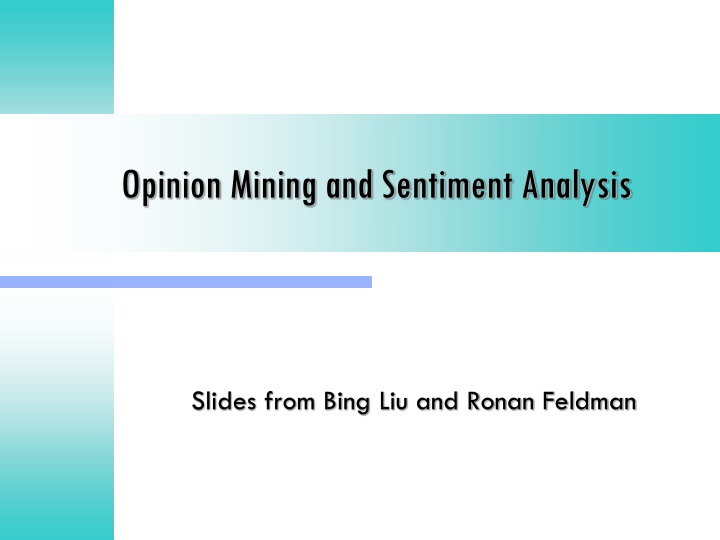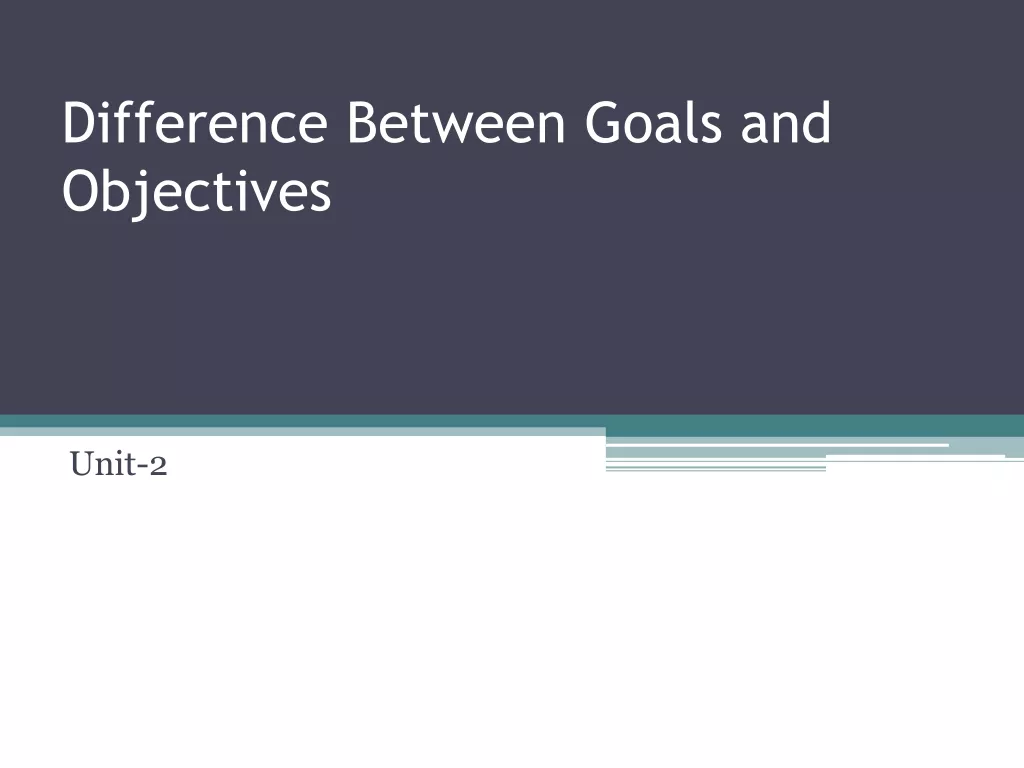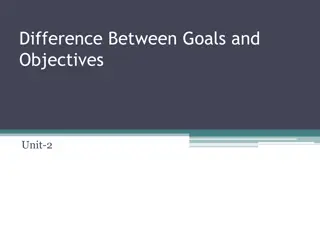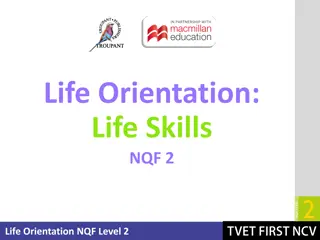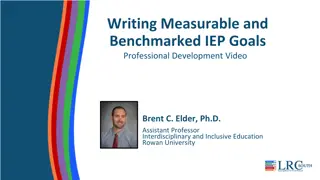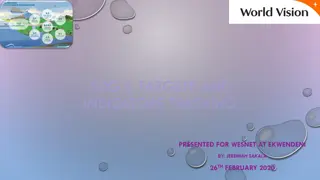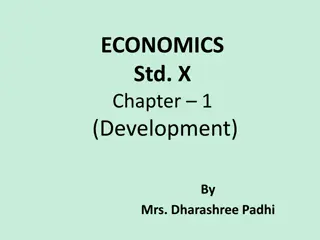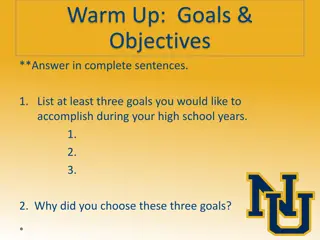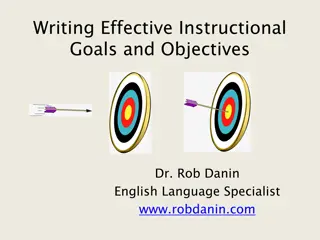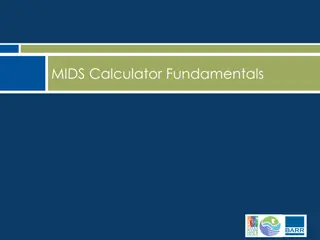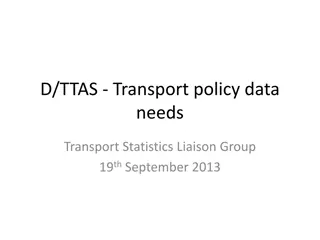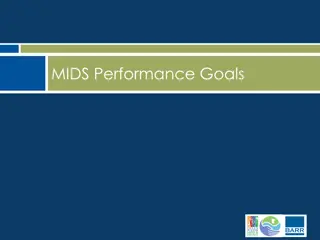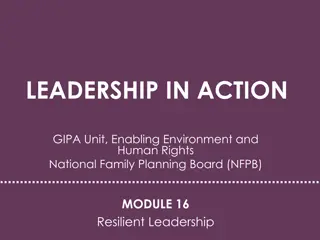Introduction to C/C++: Overview and Goals
This introduction covers the history, basic syntax, and makefiles of C/C++. It delves into compiled vs. interpreted languages, highlighting the development history of C and C++. Learn the origins, standards, and characteristics of these programming languages to enhance your coding skills and understanding.
Uploaded on Feb 25, 2025 | 0 Views
Download Presentation

Please find below an Image/Link to download the presentation.
The content on the website is provided AS IS for your information and personal use only. It may not be sold, licensed, or shared on other websites without obtaining consent from the author.If you encounter any issues during the download, it is possible that the publisher has removed the file from their server.
You are allowed to download the files provided on this website for personal or commercial use, subject to the condition that they are used lawfully. All files are the property of their respective owners.
The content on the website is provided AS IS for your information and personal use only. It may not be sold, licensed, or shared on other websites without obtaining consent from the author.
E N D
Presentation Transcript
Opinion Mining and Sentiment Analysis Slides from Bing Liu and Ronan Feldman
Introduction Two main types of textual information. Facts and Opinions Note: factual statements can imply opinions too. Most current text information processing methods (e.g., web search, text mining) work with factual information. Sentiment analysis or opinion mining computational study of opinions, sentiments and emotions expressed in text. Why opinion mining now? Mainly because of the Web; huge volumes of opinionated text.
Introduction user-generated media Importance of opinions: Opinions are useful when making a decision, we want to hear others opinions. In the past, Individuals: opinions from friends and family businesses: surveys, focus groups, consultants Word-of-mouth on the Web User-generated media: One can express opinions on anything in reviews, forums, discussion groups, blogs ... Opinions of global scale: No longer limited to: Individuals: one s circle of friends Businesses: Small scale surveys, tiny focus groups, etc.
Sentiment analysis applications Businesses and organizations Benchmark products and services; market intelligence. Businesses spend a huge amount of money to find consumer opinions using consultants, surveys and focus groups, etc Individuals Make decisions to purchase products or to use services Find public opinions about political candidates and issues Ad placement: e.g. in social media Place an ad if one praises a product. Place an ad from a competitor if one criticizes a product. Opinion retrieval: provide general search for opinions.
A Fascinating Problem! Intellectually challenging & major applications. A popular research topic in recent years in NLP and Web data mining. 20-60 companies in USA alone It touches every aspect of NLP and yet is restricted and confined. Little research in NLP/Linguistics in the past. Potentially a major technology from NLP But not yet and not easy! Data sourcing and data integration are hard too!
Abstract Problem Statement It consists of two parts 1. Opinion definition What is an opinion? 2. Opinion summarization Opinions are subjective. An opinion from a single person (unless a VIP) is often not sufficient for action. We need opinions from many people, and thus opinion summarization.
An Example Review I bought an iPhone a few days ago. It was such a nice phone. The touch screen was really cool. The voice quality was clear too. Although the battery life was not long, that is ok for me. However, my mother was mad with me as I did not tell her before I bought the phone. She also thought the phone was too expensive, and wanted me to return it to the shop. What do we see? Opinions, targets of opinions, and opinion holders
Entity and aspect/feature level Id: Abc123 on 5-1-2008 I bought an iPhone a few days ago. It is such a nice phone. The touch screen is really cool. The voice quality is clear too. It is much better than my old Blackberry, which was a terrible phone and so difficult to type with its tiny keys. However, my mother was mad with me as I did not tell her before I bought the phone. She also thought the phone was too expensive What do we see? Opinion targets: entities and their features Sentiments: positive and negative Opinion holders: persons who hold the opinions Time: when opinions were expressed
Two main types of opinions Regular opinions: Sentiment/opinion expressions on some target entities Direct opinions: The touch screen is really cool Indirect opinions: After taking the drug, my pain has gone Comparative opinions: Comparisons of more than one entity E.g., iPhone is better than Blackberry We focus on regular opinions first, and just call them opinions.
Entity and Aspect Definition (entity): An entity e is a product, person, event, organization, or topic. e is represented as a hierarchy of components, sub-components, and so on. Each node represents a component and is associated with a set of attributes of the component. An opinion can be expressed on any node or attribute of the node. For simplicity, we use the term aspects (features) to represent both components and attributes. B. Liu, Handbook of NLP, 2010
Direct Opinion: definition A direct opinion is a quintuple (oj, fjk, sijkl, hi, tl), where oj is a target object fjk is a feature of the object oj sijkl is the sentiment value of the opinion of the opinion holder hi on feature fjk of object oj at time tl. sijkl is positive, negatve, or neutral, or a more granular rating hi is an opinion holder tl is the time when the opinion is expressed B. Liu, Handbook of NLP, 2010
Our example in quintuples (iPhone, GENERAL, +, Abc123, 5-1-2008) (iPhone, touch_screen, +, Abc123, 5-1-2008)
Alternative terminology Entity is also called object. Aspect is also called feature, attribute, facet, etc Opinion holder is also called opinion source
Structure the unstructured Goal: Given an opinionated document Discover all quintuples (oj, fjk, sijkl, hi, tl) i.e., mine the five corresponding pieces of information in each quintuple, and Or, solve some simpler problems E.g. classify the sentiment of the entire document With the quintuples, Unstructured Text Structured Data Traditional data and visualization tools can be used to slice, dice and visualize the results in all kinds of ways Enable qualitative and quantitative analysis.
Sentiment Classification: doc-level Classify a document (e.g., a review) based on the overall sentiment expressed by opinion holder Classes: Positive, or negative (and neutral) In the model, (oj, fjk, sijkl, hi, tl), It assumes Each document focuses on a single object and contains opinions from a single opinion holder. It considers opinion on the object, oj (or oj = fjk) Pang and Lee, et al 2002 and Turney 2002
Subjectivity Sentence subjectivity: An objective sentence presents some factual information, while a subjective sentence expresses some personal opinions, beliefs, views, feelings, or emotions. Not the same as emotion
Subjectivity Analysis Sentence-level sentiment analysis has two tasks: Subjectivity classification: Subjective or objective. Objective: e.g., I bought an iPhone a few days ago. Subjective: e.g., It is such a nice phone. Sentiment classification: For subjective sentences or clauses, classify positive or negative. Positive: It is such a nice phone. However(Liu, NLP handbook) subjective sentences +ve or ve opinions E.g., I think he came yesterday. Objective sentence no opinion Imply ve opinion: My phone broke in the second day. Wiebe et al 2004
Rational and emotional evaluations Rational evaluation: Many evaluation/opinion sentences express no emotion E.g. The voice on this phone is clear Emotional evaluation E.g. I love this phone The voice on this phone is crystal clear (?) Some emotion sentences express no (positive or negative) opinion/sentiment E.g. I am so surprised to see you
Feature-Based Sentiment Analysis Sentiment classification at both document and sentence (or clause) levels are not sufficient, they do not tell what people like and/or dislike A positive opinion on an object does not mean that the opinion holder likes everything. An negative opinion on an object does not mean .. Objective: Discovering all quintuples (oj, fjk, soijkl, hi, tl) With all quintuples, all kinds of analyses become possible.
Opinion Summary With a lot of opinions, a summary is necessary. A multi-document summarization task For factual texts, summarization is to select the most important facts and present them in a sensible order while avoiding repetition 1 fact = any number of the same fact But for opinion documents, it is different because opinions have a quantitative side & have targets 1 opinion a number of opinions Aspect-based summary is more suitable Quintuples form the basis for opinion summarization
Feature-Based Opinion Summary Feature Based Summary: I bought an iPhone a few days ago. It was such a nice phone. The touch screen was really cool. The voice quality was clear too. Although the battery life was not long, that is ok for me. However, my mother was mad with me as I did not tell her before I bought the phone. She also thought the phone was too expensive, and wanted me to return it to the shop. Feature1: Touch screen Positive:212 The touch screen was really cool. The touch screen was so easy to use and can do amazing things. Negative: 6 The screen is easily scratched. I have a lot of difficulty in removing finger marks from the touch screen. Feature2: battery life Note: We omit opinion holders Hu & Liu, KDD-2004
Visual Comparison + Summary of reviews of Cell Phone 1 _ Voice + Screen Battery Size Weight Comparison of reviews of Cell Phone 1 Cell Phone 2 _ Liu et al. WWW-2005
Comparing 3 GPSs on different features Each bar shows the proportion of +ve opinion
Demo 1: Detail opinion sentences You can click on any bar to see the opinion sentences. Here are negative opinion sentences on the maps feature of Garmin. The pie chart gives the proportions of opinions.
# of feature mentions People talked more about prices than other features. They are quite positive about price, but not bout maps and software. 27
Aggregate opinion trend More complains in July - Aug, and in Oct Dec! 28
Sentiment Analysis is Challenging! This past Saturday, I bought a Nokia phone and my girlfriend bought a Motorola phone with Bluetooth. We called each other when we got home. The voice on my phone was not so clear, worse than my previous phone. The battery life was long. My girlfriend was quite happy with her phone. I wanted a phone with good sound quality. So my purchase was a real disappointment. I returned the phone yesterday.
Requires solving several IE problems (oj, fjk, sijkl, hi, tl), oj - a target object: Named Entity Extraction (more) fjk - a feature of oj: Information Extraction sijkl is sentiment: Sentiment determination hi is an opinion holder: Information/Data Extraction tl is the time: Data Extraction Co-reference resolution Relation extraction Synonym match (voice = sound quality) None of them is a solved problem!
Easier and harder problems Tweets from Twitter are probably the easiest short and thus usually straight to the point Stocktwits are much harder! Reviews are next entities are given (almost) and there is little noise Discussions, comments, and blogs are hard. Multiple entities, comparisons, noisy, sarcasm, etc Extracting entities and aspects, and determining sentiments/opinions about them are hard. Combining them is harder.
Extraction of competing objects The user first gives a few objects/products as seeds, e.g., BMW and Ford. The system then identifies other competing objects from the opinion corpus. The problem can be tackled with PU learning (Learning from positive and unlabeled examples) (Liu et al., 2002, 2003). See Li et al., ACL-2010
Aspect-based sentiment analysis Much of the research is based on online reviews For reviews, aspect-based sentiment analysis is easier because the entity (i.e., product name) is usually known Reviewers simply express positive and negative opinions on different aspects of the entity. For blogs, forum discussions, etc., it is harder: both entity and aspects of entity are unknown, there may also be many comparisons, and there is also a lot of irrelevant information.
Find entities Although similar, it is somewhat different from the traditional named entity recognition (NER). E.g., one wants to study opinions on phones given Motorola and Nokia, find all phone brands and models in a corpus, e.g., Samsung, Moto.
Feature/Aspect extraction Extraction may use: frequent nouns and noun phrases Sometimes limited to a set known to be related to the entity of interest or using part discriminators e.g., for a scanner entity of scanner , scanner has opinion and target relations Proximity or syntactic dependency Standard IE methods Rule-based or supervised learning Often HMMs or CRFs (like standard IE)
Double Propagation Proposed in Qiu et al., IJCAI-2009 Like co-training It exploits the dependency relations of opinions and features to extract features. Opinions words modify object features, e.g., This camera takes great pictures The algorithm bootstraps using a set of seed opinion words (no feature input). To extract features (and also opinion words)
The DP method DP is a bootstrapping method Input: a set of seed opinion words, no aspect seeds needed Based on dependency tree (Tesniere 1959) This phone has good screen
Group synonym features Features that are domain synonyms should be grouped together. Many techniques can be used to deal with the problem, e.g., Topic modeling, distributional similarity, etc Semi-supervised learning method Z. Zhai, B. Liu, H. Xu and P. Jia. Grouping Product Features Using Semi-Supervised Learning with Soft- Constraints. COLING-2010.
Coreference Resolution Different from traditional coreference resolution Important to resolve objects and features E.g.., I bought a Canon S500 camera yesterday. It looked beautiful. I took a few photos last night. They were amazing . Some specific characteristics of opinions can be exploited for better accuracy. See X. Ding and B. Liu, Resolving Object and Attribute Coreference in Opinion Mining. COLING-2010.
Coreference Resolution Attardi et al. 2010. Coreference Resolution by Parse Analysis and Similarity Clustering. Best performing at SemEval 2010 Identifies mentions from dependency trees Uses eager classifier to cluster mentions Positive and negative instances are created by pairing each mention with each of the preceding ones Features extracted from pairs of mentions: Lexical: Same, Prefix, Suffix, Acronym Distance: Edit, mention, token, sentence Syntax: same HeadPoS, pair of HeadPos Pair of counts of mention occurrences Same NE type For pronouns: type, pair of genders, pair of numbers
Accuracy at SemEval 2010 Mention 82.7 59.2 73.9 83.1 B3 64.6 50.7 61.3 66.0 CEAF 57.1 49.5 57.3 59.3 Catalan German English Spanish
Coreference Resolution Method of (Lee, Peirsman et al. 2011) Best-performing in CoNLL-2011 Based on locating all noun phrases, identifying their properties, and then clustering them in several deterministic iterations (called sieves), starting with the highest-confidence rules and moving to lower-confidence higher-recall ones. Eager approach: any matching noun phrases with matching properties are immediately clustered together.
Identify opinion orientation For each feature, we identify the sentiment or opinion orientation expressed by a reviewer. Almost all approaches make use of opinion words and phrases. But notice again (a simplistic way): Some opinion words have context independent orientations, e.g., great . Some other opinion words have context dependent orientations, e.g., small Many ways to use opinion words. Machine learning methods for sentiment classification at the sentence and clause levels are also applicable.
Aggregation of opinion words Input: a pair (f, s), where f is a product feature and s is a sentence that contains f. Output: whether the opinion on f in s is positive, negative, or neutral. Two steps: Step 1: split the sentence if needed based on BUT words (but, except that, etc). Step 2: work on the segment sf containing f. Let the set of opinion words in sf be w1, .., wn. Sum up their orientations (1, -1, 0), and assign the orientation to (f, s) accordingly. In (Ding et al, WSDM-08), step 2 is changed to = i d ( . w o , n i with better results. wi.o is the opinion orientation of wi. d(wi, f) is the distance from f to wi. Ding and Liu, 2008 ) w f 1 i
Basic Opinion Rules Opinions are governed by some rules, e.g., 1. Neg Negative 2. Pos Positive 3. Negation Neg Positive 4. Negation Pos Negative 5. Desired value range Positive 6. Below or above the desired value range Negative B. Liu, NLP handbook, 2010
Basic Opinion Rules 7. Decreased Neg Positive 8. Decreased Pos Negative 9. Increased Neg Negative 10. Increased Pos Positive 11. Consume resource Negative 12. Produce resource Positive 13. Consume waste Positive 14. Produce waste Negative B. Liu, NLP handbook, 2010
Two Main Types of Opinions Direct Opinions: direct sentiment expressions on some target objects, e.g., products, events, topics, persons. E.g., the picture quality of this camera is great. (many are much more complex). Comparative Opinions: Comparisons expressing similarities or differences of more than one object. Usually stating an ordering or preference. E.g., car x is cheaper than car y.
Comparative Opinions Gradable Non-Equal Gradable: Relations of the type greater or less than Ex: optics of camera A is better than that of camera B Equative: Relations of the type equal to Ex: camera A and camera B both come in 7MP Superlative: Relations of the type greater or less than all others Ex: camera A is the cheapest camera available in market Jindal and Liu, 2006
